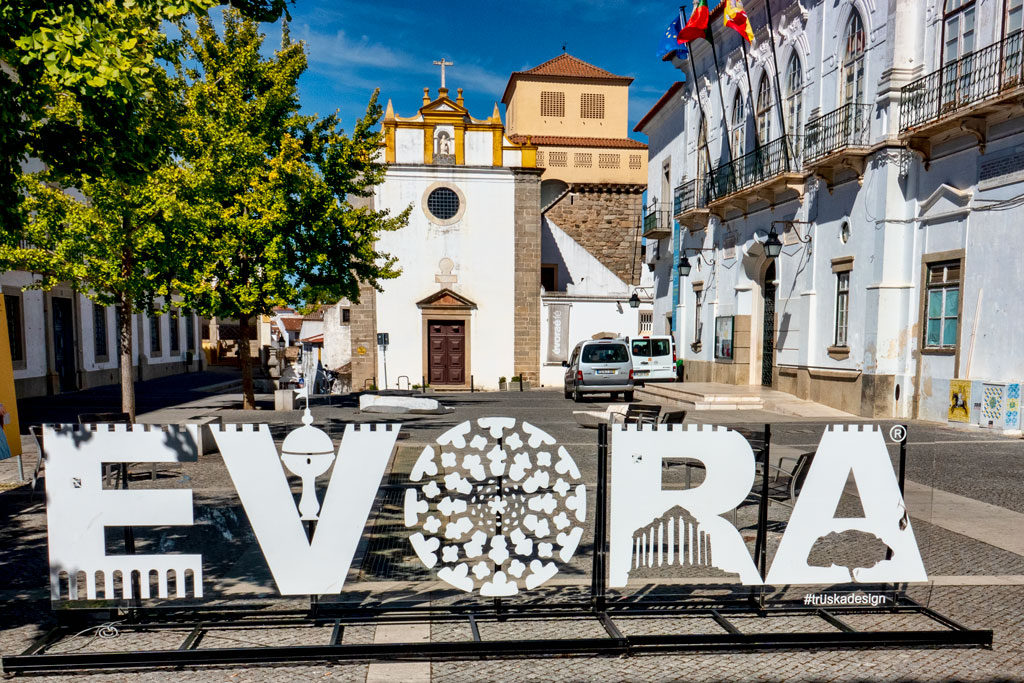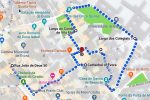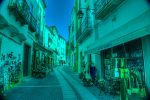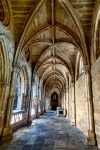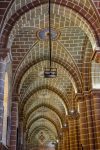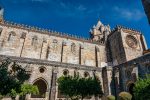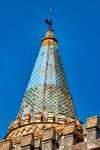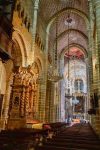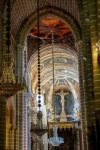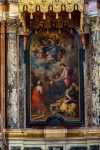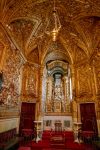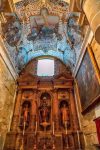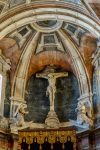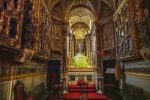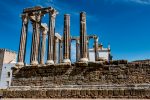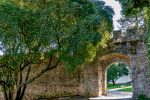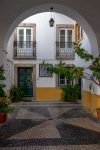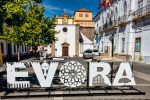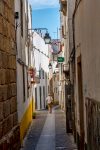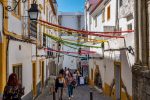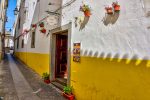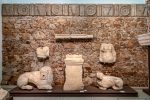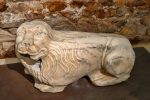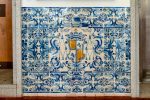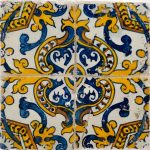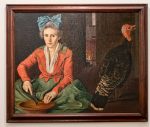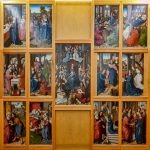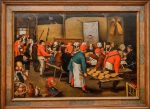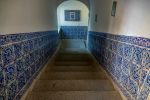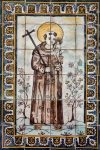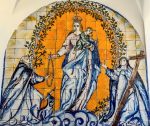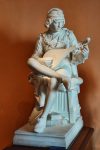TODAY’S TOURING
We were full from the night before, so we ate a small breakfast.
- Talked to other guests at breakfast.
- The wife,French Canadian, spoke better English than husband so we talked more with her.
- We both liked to travel, so we compared our previous travels and plans in Portugal.
I realized I couldn’t find my backup batteries for my camera.
- The manager at the guest house referred us to a nearby photo shop, but it was closed (Sunday).
- We will try again tomorrow.
- Fortunately, I had a work around – use an external battery & cable to power the camera externally; it works but is a kludge.
We began our walking tour:
- It was a hot day: 87 degrees F; started cold but quickly warmed up.
- We started with the Cathedral, including cloisters, but skipped tower climb.
- The Roman temple was next door so we couldn’t pass it up.
- We read the university was worth a visit to see the interiors. However, it was closed and the buildings locked.
- The Museum of Evora was out next stop.
- It was now time to circle back to the guest house and have some pastries & espresso on the way.
We rested in guest room and planned our dinner. Marty made reservations.
Dinner at Chao dos Covas
- It was a good thing that Marty made the reservations. The outdoor seating was full, but we got a table.
- Stephen: Steak with pickled vegetables, frites – all good
- Marty: Black pork cheeks with applesauce – also good
- Beverages: Red Sangria (very good with cinnamon & oranges); sparkling water
REFERENCES
▲Évora Cathedral (Sé de Évora) (Rick Steves)
Portugal has three archbishops, and one resides here in Évora. This important cathedral of Santa Maria de Évora, built in the late 12th century, is a transitional mix of Romanesque and Gothic styles. As happened throughout Iberia, this church was built upon a mosque after the Reconquista succeeded here. That mosque was built upon a Christian Visigothic chapel, proving that religious and military tit-for-tat is nothing new.
Cathedral (Rick Steves)
Located behind the museum, this cathedral was built after Giraldo’s conquest – on the site of the mosque.
Roman Temple (Rick Steves)
With 14 Corinthian columns, this temple was part of the Roman forum and the main square in the first century A.D. Today, the town’s open-air concerts and events are staged here against an evocative temple backdrop. It’s beautifully floodlit at night. While previously known as the Temple of Diana, it was more likely dedicated to the emperor.
▲University of Évora (Universidade de Évora) (Rick Steves)
While far less monumental or interesting than Coimbra’s (see here), Évora’s historic university building is worth exploring—especially during the school year, when it offers a chance to rub elbows with students filling its blue-tiled galleries.
This museum stands where the Roman forum once sprawled. An excavated section of the forum is in the museum’s courtyard, surrounded by a delightful mix of Roman finds, medieval statuary, and 16th-century Portuguese, Flemish, Italian, and Spanish paintings. The museum also contains megalithic artifacts, including some found near Évora at the tomb known as the Anta Grande do Zambujeiro.
Chão das Covas (Lonely Planet)
Tucked away on a small plaza beside the aqueduct, this friendly, boxcar-sized eatery serves up tasty home-cooked Alentejan classics that change by day, as well as good-value petiscos (sharing plates) like fried squid, roasted peppers, cheese platters and the like. It’s a fine place to linger, with a barrel-vaulted ceiling, black-and-white photos of Évora, and terrace seating on warm days.
